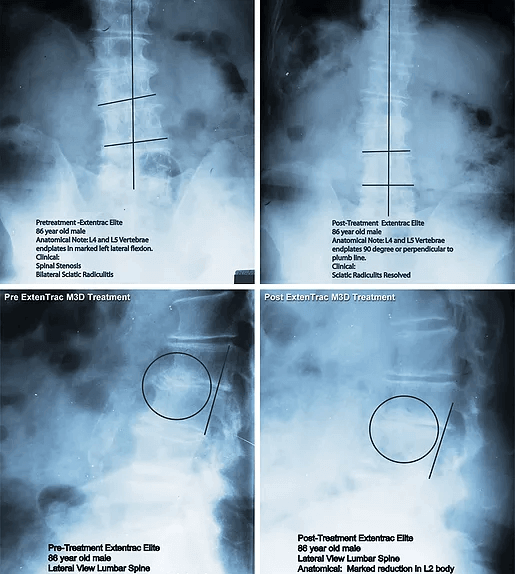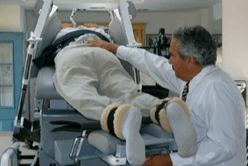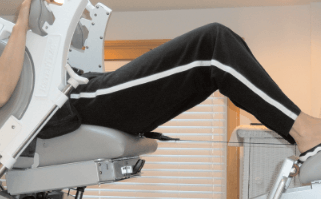Pre/Post Extentrac® M3D Treatment

A practice based prospective study of 31 consecutive patients (21 men, 10 women – mean age 57 years) with low back pain with or without radiculopathy.
Each patient completed the Oswestry Low Back Pain Disability Questionnaire (Ver.2) and the Numeric Rating Scale (NRS-11) – pre and post treatment. Disability assessment was based upon an absolute percentage point change in the Oswestry Disability Index (ODI). An absolute 6% point change is defined to be the Minimum Clinical Important Difference (MCID), 1 between patients who have improved with Extentrac® treatment and those that remained stable.
A practice based retrospective study of 133 patients utilizing the Extentrac® Elite multi-functional therapy table.
Designed Not Only With The Patient In Mind, Designed With The Doctor In Mind As Well. With Extentrac® Elite’s high-tech look and performance, it’s easy to see why the patient’s and doctor’s best interest was kept in mind.
Nothing can adequately describe Extentrac® Elite’s ease of operation, patient control, and treatment flexibility – in terms of matching treatment intervention to examination findings. Its key performance features include:
Design: Practice-based retrospective data analysis to determine the effectiveness
of the Extentrac® Elite multifunctional therapy table on low back pain (LBP) with or without radiculitis. Patient outcome data below (Table 1.) is based on the use of an Active Control Group. Successful patient outcome through the application of Extentrac® Elite’s various treatment options enabling the clinician to implement Evidence Based therapies, (the application of therapeutic procedures which have been subject to research outcome studies) not limited to axial decompression or linear traction.


15 yr. old patient – After 10 treatments.

86 yr. old patient – After 15 treatments.




Unfortunately, the Extentrac® Elite is not for everyone. It is not advisable to use the Extentrac® Elite if the following conditions are present:
Multi Directional Disc Decompression Extentrac® Elite's patented M3D System is in demand because it has proven to be a better technology for targeting specific musculo-skeletal conditions by allowing the clinician to position patients according to their needs. It offers virtually unlimited patient positioning and a choice of decompression and other evidence-based protocols in the prone, supine, and lateral position. Because of more exact and direct spine positioning prior to decompression, treatment results are superior and achieved in 15 minutes as opposed to the 30-minute treatment sessions allowing the practitioner to see more patients per day.
The average treatment time is 15 minutes. This is due to the flexibility of customized treatment protocols which target the area in need of correction. Extentrac® also allows for up to 200 lbs of force, unlike other devices. Treatment time depends on type of condition. Some patients require manual treatment, others only require automated protocols. There are patients who feel relief in 10 minutes, while others may require 20 minutes. Chronic, acute, maintenance, etc. But overall, 15 minutes is the average time. Doctors are able to see many more patients per hour with Extentrac®.
Number of treatments is dependent upon the diagnosis and prior treatment history. Increments of 10 visits is recommended to assess patient progress during that time. Patients with severe pain and stenosis with greater spinal pathologies on MRI or x-ray may require an upfront recommendation of 25 visits. Surprisingly, some patients with stenosis and severe spinal pathologies may respond within 10 treatments. Follow up treatment of continued care twice a month should then be recommended. The typical average is 10-25 treatments per patient.